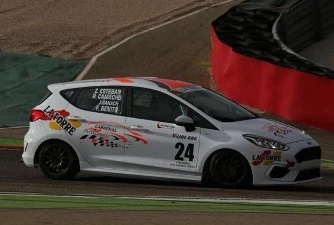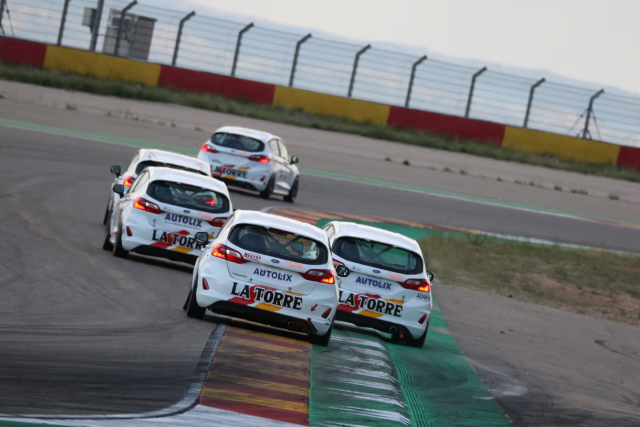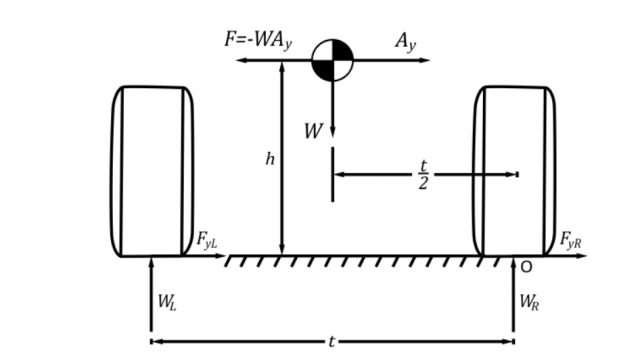The Milliken book i would rly like to read once in my life and i think there is a reason that the first third is about tires: they are the most important thing on a race car.
"Second, roll center is just as important as CG in determining load transfer." it is what many people think but I think it is not entirely true: Look at the simplified definition of overall lateral load transfer (independent of roll center), all of this is actually
from the book you recommend, it is also well described here:
https://racingcardynamics.com/weight-transfer/
dW = W*Ay*h/t
dW = load transfer
W = weight
Ay = lateral acceleration
h = GC height
t = track width
one of the reasons for this is that the lever arm for that fromula above is
NOT the distance between roll center and CG you describe (but it in reality it has some influence,
see below), but the height of the GC h! It rly means, lower your CG by 50% -> decrease load transfer by 50%
You are right that roll center has a effect on load transfer, but I think more in a sense that you can balance the load transfer over the axles (this is also how race teams use anti-roll bars to set axle roll stiffness):
"when we increase front roll centre height, the lateral weight transfer decreases on the rear axle while increasing on the front. Conversely, if you increase rear roll centre height, lateral load transfer increases on the rear axle and decreases on the front axle"
To reduce
overall load transfer of the car (this you want to increase overall grip) you have to lower CG!
But it is a little more complicated than the above formula, there are 3 components and if you look at the complete derivation roll center height has some effect on load transfer.
This considered, load transfer for an axle is (it is directly derived in the article linked above with an explanation of the parameters):
View attachment 60957
"In any case, do what you think is cool. More power to you. Just don’t mislead others with “advice” that you appear to have no actual grasp of, except “because racecar!!!”"
Yes! I 100% agree but I think I laid out a lot more arguments in this thread than just "because raceacar"
Milliken is a great book, but dense (that article is largely lifted from it), and no offense, but it appears you’ve read about a 1/4 way through the article and gotten bored and confused.
First, the straight up CG vs Track width “total lateral load transfer” is a simplified model that ignores suspension geometry and while it still has an effect on load transfer, it has little actual effect on when it comes to chassis setup. The more complex model gets broken down later in the article.
This is an artifact of simplifying from Milliken, which spends several chapters on multiple simple models of a vehicle, starting with a single wheel, then a two wheel bicycle, then a four wheel rigid vehicle, and finally a model that includes suspension geometry. It also derives cg and roll center as mathematical concepts, initially ignoring (but acknowledging later) that in an actual car at the final
chassis setup stage, cg and roll center cannot be changed independently.
The reason for this is that the initial assumptions are based around actually designing a suspension system from scratch, where cg and front+rear roll centers can be defined separately.
In the end, the roll component that is insignificant is from roll angle and the effect from gravity due to the CG being offset laterally from roll center. This establishes that “extreme body roll” in itself has very little effect on load transfer.
With suspension taken into account, The only portion of the car that behaves as you are assuming is the unsprung mass (wheels, tires and outer control arms/shocks/struts) which is a small component of the vehicle mass.
What’s described later is that in fact the “direct” or “kinematic” load transfer at each axle is defined by the distance from cg to roll axis, where roll axis is the line between front and rear roll centers.
The “it’s complicated” part comes in is that in moving roll center and cg at one end of the car by raising and lowering that axle has a compound effect on both axles of the car, the angle of the roll axis and that stiffness of one axle has an effect on load transfer at the other. It’s from this effect that we change understeer/oversteer dynamics.
In the end, on a street car that is past the design stage and has predetermined CG and suspension geometry, the total load transfer cannot be changed much at all, and changing CG height alone is fairly irrelevant when it comes to “tuning” the suspension.
Instead, some knobs we have to turn in a non-aero car are:
1) Ride frequency which determines the ability of the tires to follow the road. This is primarily influenced by spring rates, and the optimum 2.0-2.5 Hz target mentioned previously is an empirically derived figure that comes from typical road surface feature sizes for a typical car sized mass (1000-2000kg). Frequency ratio also affects pitching vs heaving (aka flat ride) behavior over bumps which influences vehicle stability and controllability.
2) Relative front to rear roll stiffness ratio, which affect understeer/oversteer dynamics. When ride frequency is optimized, anti-sway bars have a much higher (2-3x) effect on roll stiffness, and so tuning this behavior is best done with sway bars.
3) Increasing roll stiffness (which has little effect on total load transfer) on a Mac-strut car, geometry has poor camber compensation with roll, so this points towards higher roll stiffness to maintain tire geometry. Not as important on a double-wishbone car, which can allow more body roll.
4) Higher roll stiffness can help with dynamic stability, as large amounts of body roll mean a slower response time to steering inputs
5) There’s an opposite influence - high roll stiffness from anti-sway bars means your suspension is less independent, and results in deviation from optimum ride frequency when it comes to one-wheel bumps, and so this means we want the least roll stiffness we can get away with and still accomplish #4 (vehicle stability and response)
And of course this all goes completely out the window with heavy underbody aero, as then we care more about keeping the front splitter and rear diffuser level and maintain the most consistent ride height (as total downforce changes as the aero gets closer and farther from the ground, from changes in airflow). Aero cars want stiffer setups.


![Wink [wink] [wink]](/images/smilies/wink.gif)




